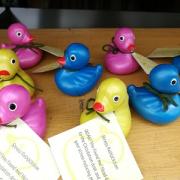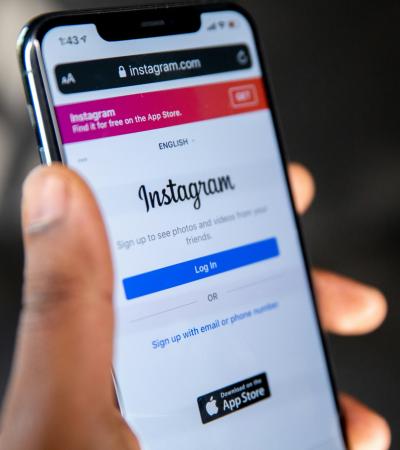Inserting a bit of whimsy into the academic library, staff hid 20 rubber ducks throughout Kathryn A. Martin Library’s four floors throughout the month of March. If found, the finders were able to redeem their duck for a de-stress kit, which included candy, stressballs, pencils, lanyard and stress-reduction tips.
Advanced Planning
Our goals were to encourage exploration of the library, including more interaction with the building and staff, and provide the community with stress-reduction opportunities and a dose of whimsy.
We began planning one month in advance, beginning with acquiring cast-off promotional materials from a defunct college unit, including 20 rubber ducks. Having a treasure trove of stress balls, lanyards, compasses, pencils and mini-staplers, our communication team talked about ways to share out the wealth in a meaningful way.
We found the pun “Stress ReDUCKtion” entirely too funny and asked ourselves, “How fun would it be to find a rubber duck in the library?”
Marketing
The event was promoted through small signage posted throughout the library, as well as on the library's website.
That said, the ducks really spoke for themselves; being brightly colored, patrons noticed them right away. Tags around the ducks invited patrons to interact with them by picking them up. As soon as a couple of ducks were found, word got out quickly.
Budgeting
Cost was minimal. We found most everything we needed by scrounging through other departments' unused promotional materials (contact your admissions office and student centers!). We received carabiners with compasses, mini-staplers, branded lanyards, pens and pencils, stress balls and water bottles. We also supplemented the prize bags with motivational 1-inch buttons from our collection, and inspiration and stress-reduction handouts.
Day-of-event Activity
We gave this project to our three student engagement assistants with a very general framework of “we have rubber ducks.” These student workers created promotion signage, a press release, instructions for the ducks, and most importantly, documented where all the ducks were nesting.
Library staff informed our facilities management about the program, which helped with logistics and retrieval.
We hid the ducks everywhere: in the stacks, in carrels, by the bathrooms (on top of water fountains) ... because the library is so heavily used, we found that any spot was fair game.
Program Execution
The event performed far better than we had imagined! Within a day or so, all 20 ducks were found. We ended up putting them out two more times. It was very popular, and feedback was great. We heard anecdotally that some "duck-hunting parties" were formed when students wanted to take a break from studying.
The program was very successful — so much so that we will do it again in the future. We believe it was a nice break for students and staff and provided a friendly reminder that the library is fun.
Also, our campus in general is very "green" thinking. By taking on items from a defunct program, we were able to help recycle some of the promotional materials.
Advice
Once people knew the ducks were hidden they began looking everywhere for them. It would be really great fun to hide them among books about ducks or waterfowl.
We ran this activity for three cycles, so as soon as all the ducks were found we put them back out and filled up new prize bags. The biggest obstacle we found was with the prize bags (one per duck). The issue was that some students were repeat finders, and the prize bags were all the same. My advice would be, if doing multiple runs, vary the prizes. Be creative, and don't be afraid to fail!






